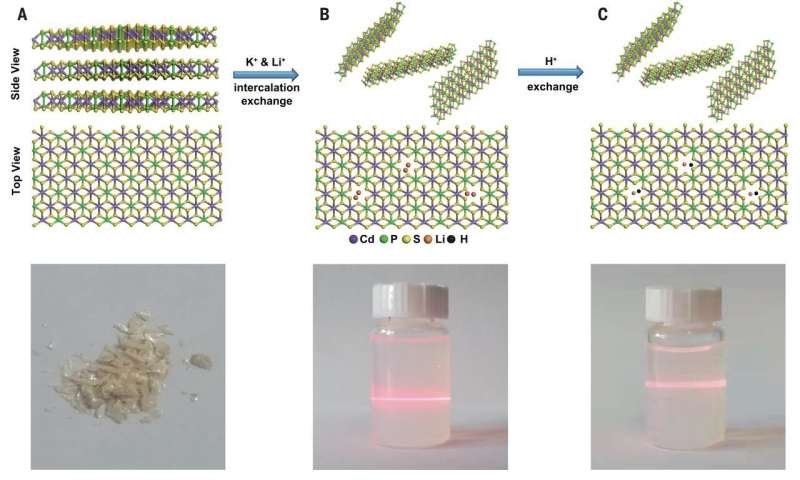A team of researchers affiliated with a host of
institutions in China has developed a new class of proton-exchange
membranes (PEMs) assembled from transition-metal phosphorus
trichalcogenide nanosheets. In their paper published in the journal
Science, the group describes using metal vacancies to improve
conductivity in the PEMs. Fengmei Wang and Jun He with the National
Center for Nanoscience and Technology, Beijing have published a
Perspective piece in the same journal issue outlining the history
of proton exchange membrane research and the work done by the team
in this new effort.



